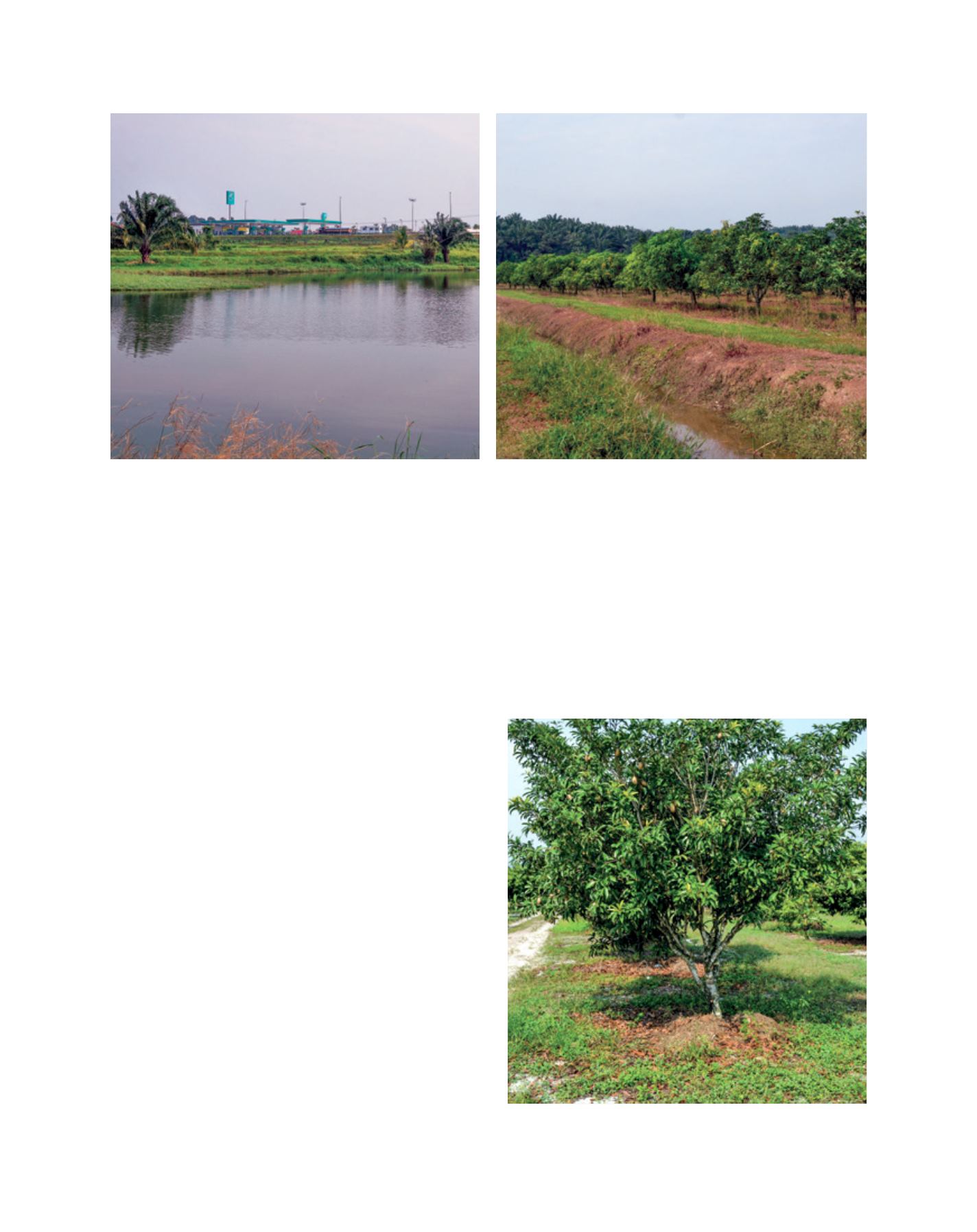

transplants are not scorched by any ammonia gas that may
still be emanating from the organic sources.
Spot application of organic manure is recomemmended
for crops such as lemongrass, watermelon and fruit trees
and also for those crops with spacing at 1 m x 1 m or
greater. Spot application will save the total amount of
organic sources required per hectare. The organic source
is applied in planting holes and then thoroughly mixed
with the sand before planting.
The rates of application of the organic inputs depend on
the crops to be planted. For tomatoes the yield increased
significantly with application of 70 t/ha of POME while leaf
mustard yield increased linearly when poultry manure was
applied at 10-40 t/ha. Okra and cucumber yield increased
when 40-50 t/ha of poultry manure was applied. Chilli
increased significantly when 80 t/ha POME was applied.
For leafy vegetables an application of 30-60 t/ha of poultry
manure significantly increased the yield. For short-term
leafy vegetables a basal application of about 40 t/ha of
poultry manure is sufficient.
Organic fertilizer significantly affects the yields of crops.
Applying organic matter greatly increased the yield of crops
such as sweetcorn, chlli and tomato. A combination of organic
and inorganic fertilizers greatly boosted the yields of all the
crops. Yields of leafy vegetables such as Chinese mustard,
Chinese spinach, water convolvulus, lettuce and Chinese
chives, grown on sand tailings with appropriate amounts of
organic and inorganic sources of nutrient can match or exceed
the mean yields achieved by farmers on normal soils. Several
fruit vegetables also perform well on sand tailings compared
to the mean yield of farmers working on normal soils. This
clearly shows that organic inputs supplemented by inorganic
fertilizers are crucial to high productivity. Planting herbs on
sand tailings also produced good yields. Herbs such as lemon-
grass, ginger, turmeric, noni and aloe vera produced yields
that exceed farmers’ means when planted on sand tailings.
These results indicate that problem soils such as sand
tailings can become productive farms when given proper
treatment with organic inputs. Crops such as vegetables,
fruits, sweet potato, sweetcorn and herbs can be success-
fully produced by application of the technologies developed
by MARDI. With these technologies sustainable agricul-
ture production on sand tailings is equal that obtained from
normal soils. Thus soil improvement in sand tailings has
not only produced fresh fruits, vegetables and herbs for the
nation but also helped to improve farmers’ incomes.
Sand tailing areas are close to urban areas with a ready market for
fresh food crops
Image: MARDI
Irrigation for agriculture: (left) a lake on ex-mining land provides a water source and (right) mangoes are planted on slime tailings with an irrigation trench
Images: MARDI
[
] 170
L
iving
L
and
















